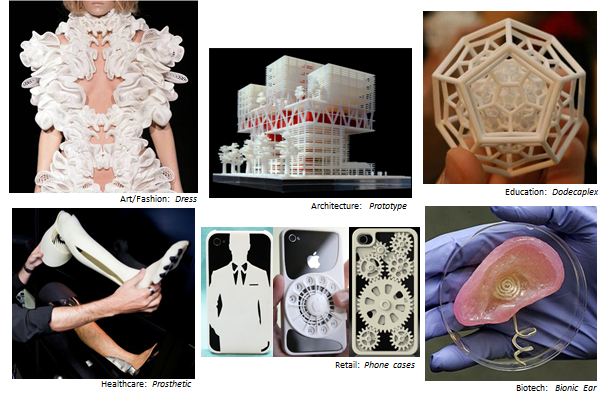Now Is The Time For CIOs To Tune Into 3D Printing
While the basic technology behind 3D printing has been around for decades, recent hype and coverage has recast a spotlight on the industry. Over the last few years, incumbent and emerging vendors have been rapidly developing 3D printers, each more productive than the last, with an ever expanding variety of printable materials and possible use cases.

Outside of consumer hobbyists, 3D printing will have the greatest impact on businesses that design and manufacture discrete products, introducing rapid prototyping to speed up development cycles and an alternative production method for customized finished objects.
What does this mean for CIOs and technology management departments?
As the resident technology expert, you may be called upon to evaluate the hardware and feasibility of 3D printing for your business. Beyond assessment, businesses may demand:
- Technology support and management. If your business decides to incorporate 3D printers, as a new networked device, support could entail adapting and integrating the 3D printing ecosystem into current product lifecycle management platforms and processes, not to mention troubleshooting hardware and software issues.
- Heightened digital asset security. As techniques and materials become more precise and durable, 3D printing will continue to extend beyond prototypes into finished products following the example of the BAE Systems Tornado fighter jet containing 3D printed parts.With this success in mind, 3D printing has the potential to transform how businesses buy and sell products, replacing physical merchandise with digital blueprints. This shift is unrealistic for products that are manufactured in high volume, but potentially more economical for outdated, unique, or customized items. As customers acquire high-quality printers, they will be able to print their new purchases or replacement parts in any location. Not only will this disrupt your business model, but it will also mandate heightened security measures, as revenue will be directly tied to these newly minted digital assets.
Over the last six months, my colleague Michael Yamnitsky and I have been researching the 3D printing ecosystem, working to understand the impact on business and technology systems. We anticipate that 3D printing will expand the reach of digital disruption, paving the way for new products, processes, and delivery models.
For more information and insight into this discussion, see our recent report “3D Printing Drives Digitization Further Into Products, Processes, And Delivery Models”.